After years of developing this recipe, I am proud to present my vegetarian take on authentic Senegalese mafe, the iconic peanut-based Senegalese stew. This mafe is bursting with flavour, incredibly comforting and delicious. This blog post will equip you with all you need to conquer this recipe.
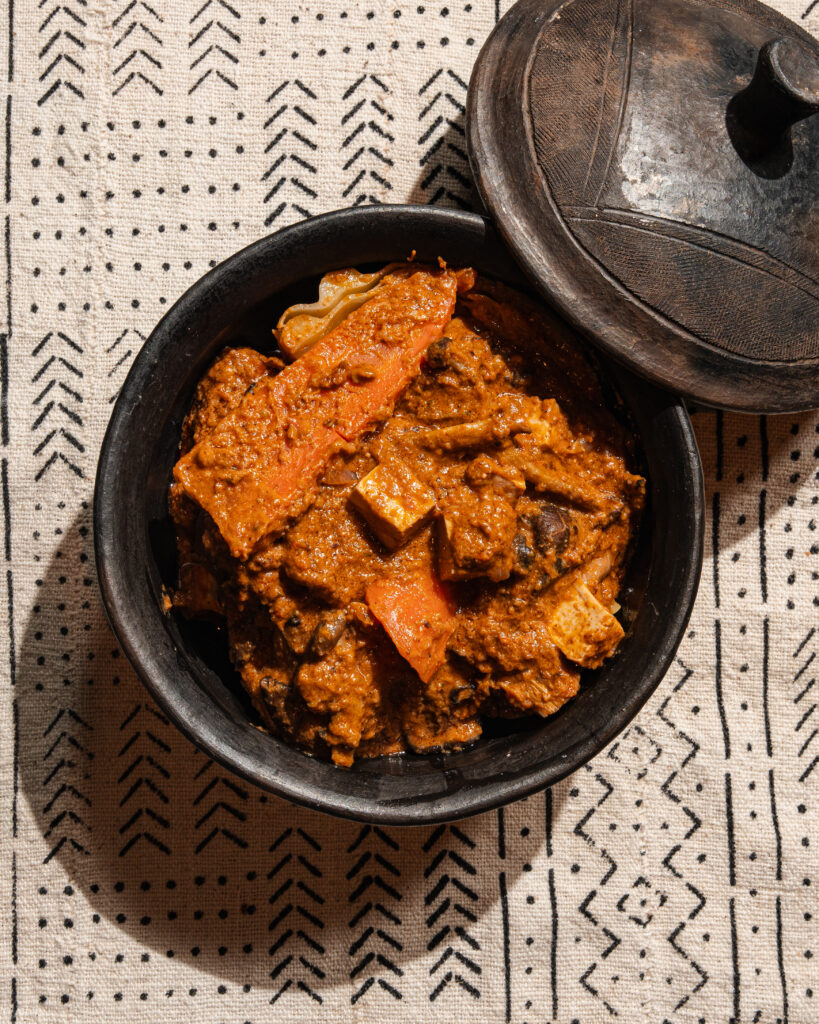
What is Senegalese Mafe
Mafe is the name of a Senegalese peanut and vegetable stew. It is one of the most iconic Senegalese recipes, along with Thieboudienne and Yassa. The stew is made with a base of tomatoes, peppers, and nokoss, thickened with a peanut slurry and cooked with chunks of vegetables, such as cabbage, pumpkin, carrots and eggplants. The stew is layered with flavour and is the ultimate comfort food.
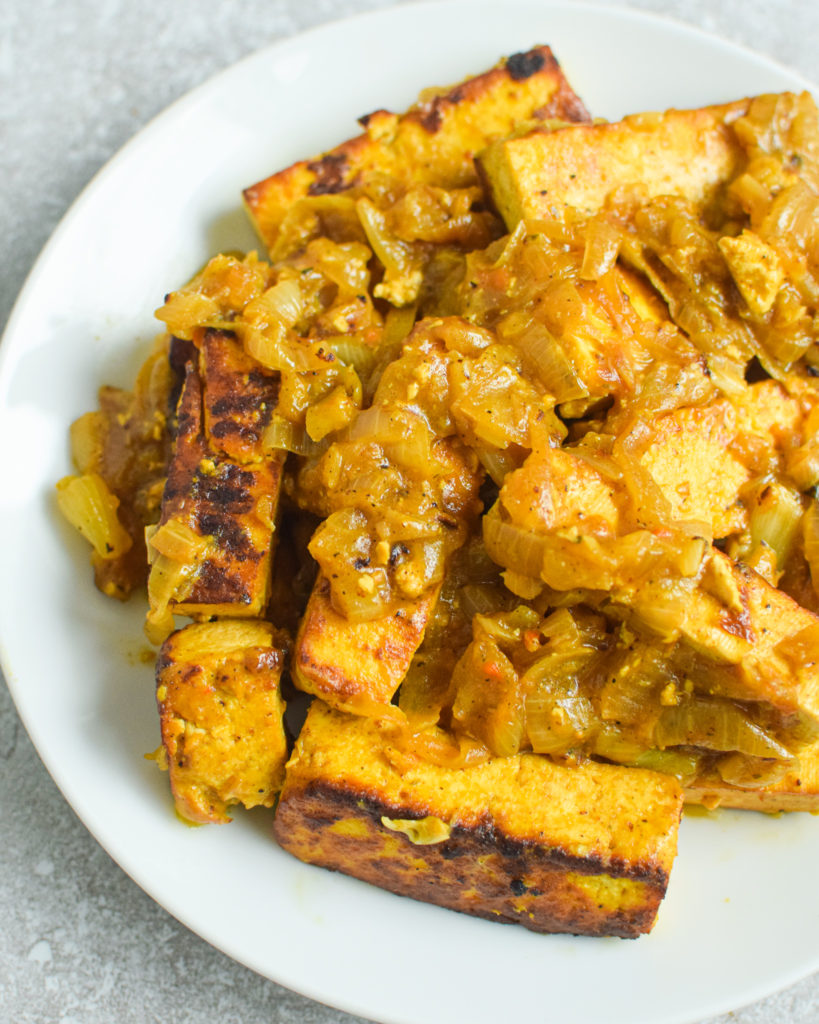
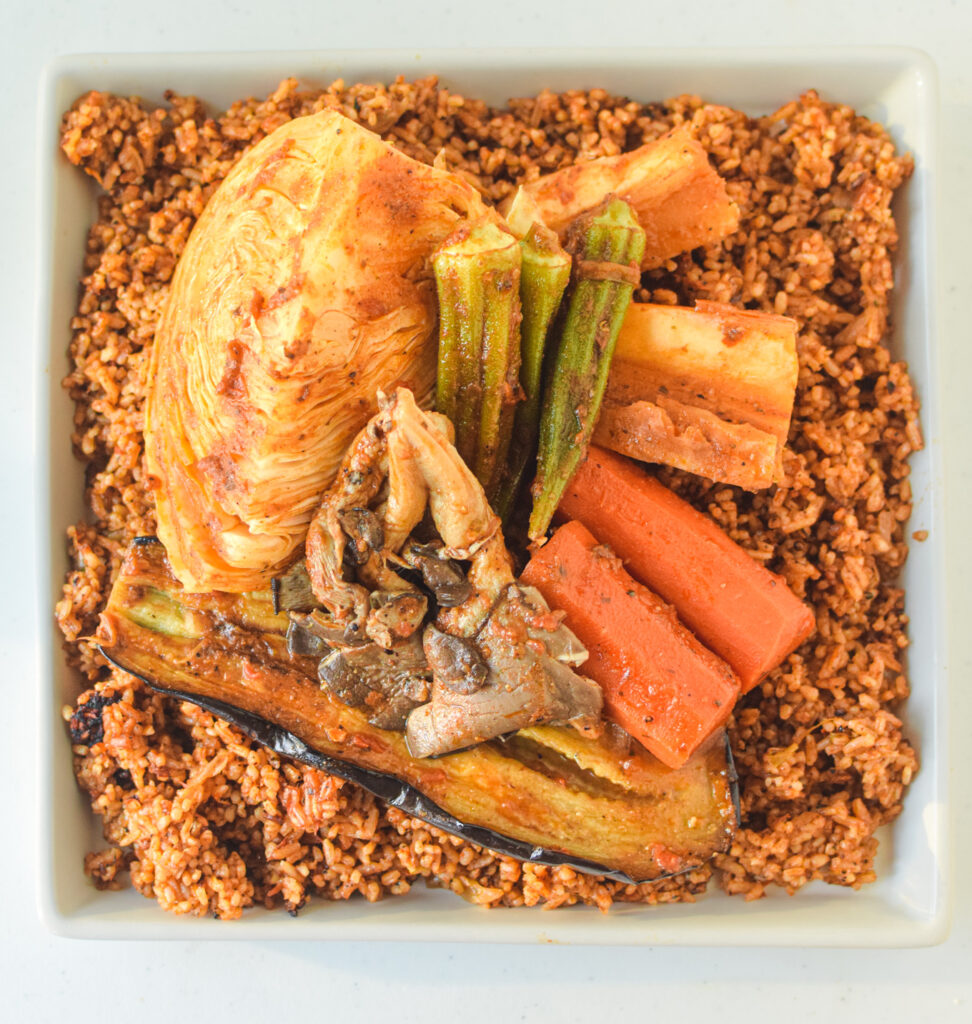
West African Peanut Stews/Soups
There is a significant misconception surrounding peanut-based stews and sauces found across West Africa. In full transparency, doing research for this recipe proved a little challenging because my Google search results were flooded with several “West African” Peanut Stews or “African” Peanut stews made by non-African bloggers with very little cultural context. Senegalese mafe, like many types of peanut stews found across West Africa vary in their flavours, ingredients and cooking methods.
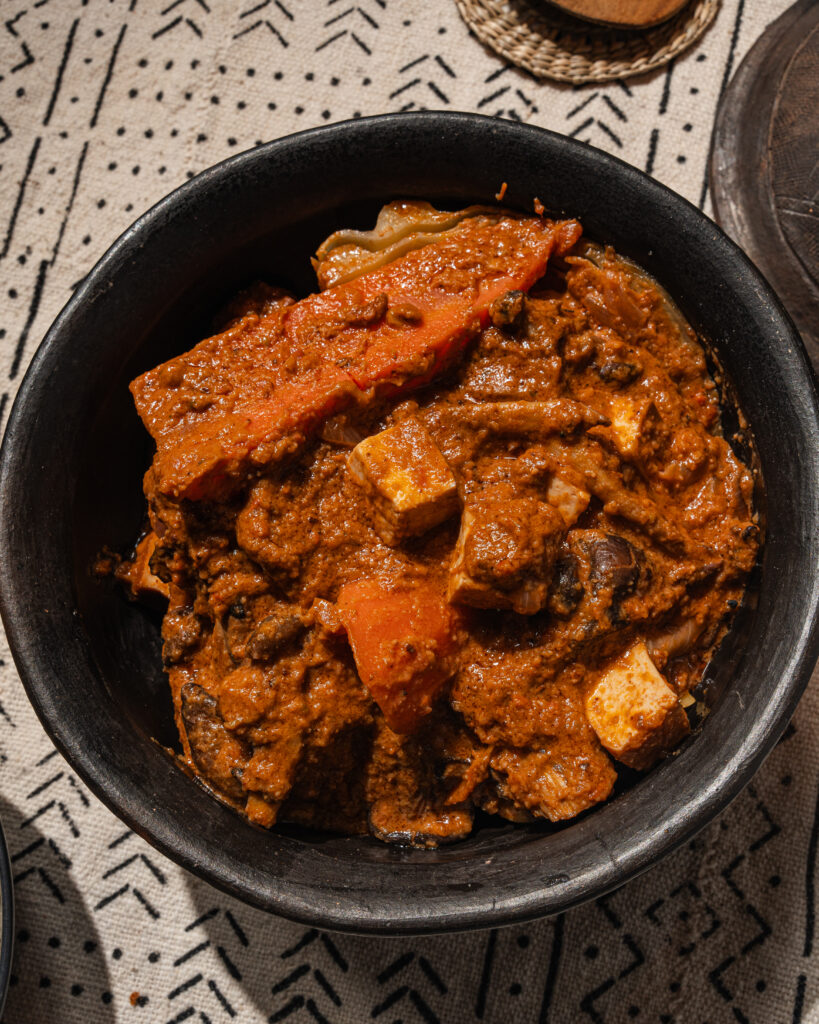
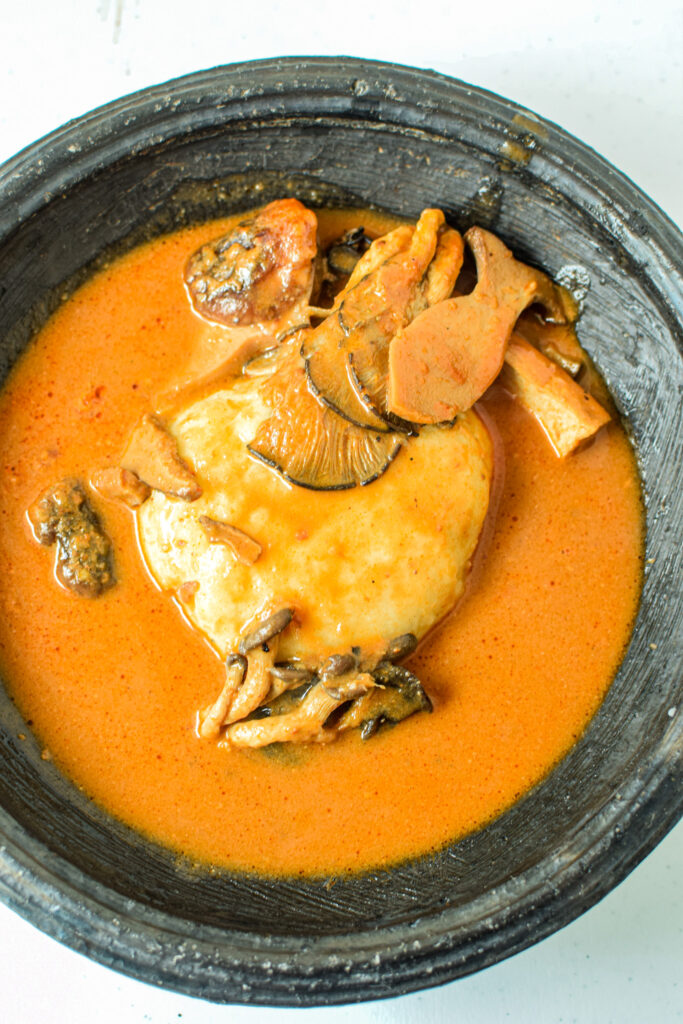
Senegalese made draws its flavour from koss, fermented seas snails (yete), whole vegetables, and tomatoes. The preparation method for Malian Tige Degue or Gambian Domoda is similar; however, as you venture East and/or South the peanut based dishes are different. Southern Ghanaian groundnut soup or Togolose Azidessi are brothier in texture; there are no chunks of vegetables. Northern Nigeria opts for crushed peanuts and leafy greens in their peanut-based stews. Unfortunately, this diversity is seldom reflected in the recipes people find on Google.
My Vegetarian approach to Senegalese Mafe
When a recipe can be made with different types of animal proteins and still maintain its authenticity, then swapping out the meat takes nothing away from the traditional recipe. Mafe relies heavily on flavours from aromatics, herbs, peanuts and whole vegetables, which makes it very easy to make plant-based. Instead of meat, I use mushrooms. Instead of the fermented snails, I use fermented locust beans (netetou/dawa dawa), which are also heavily used in Senegalese cuisine — some renditions of mafe use netetou instead of yete. For protein, I add tofu. And just like that we have a vegetarian take on Senegalese Mafe.
What you will need for this recipe
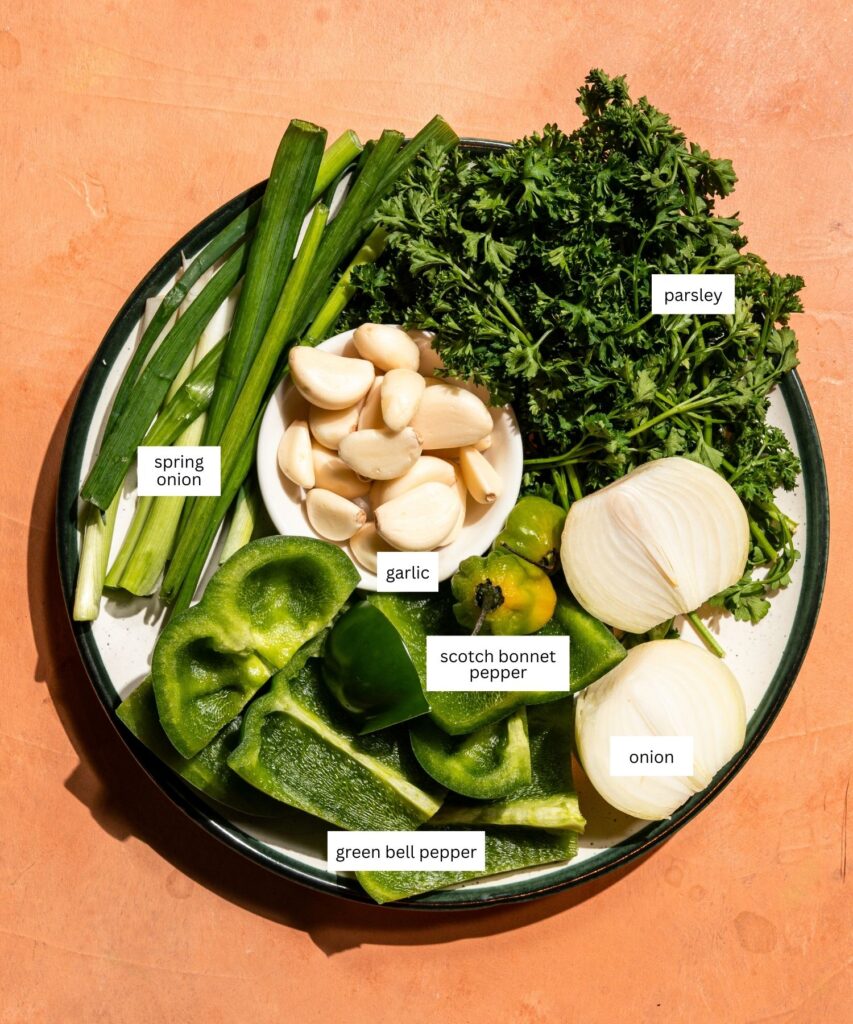
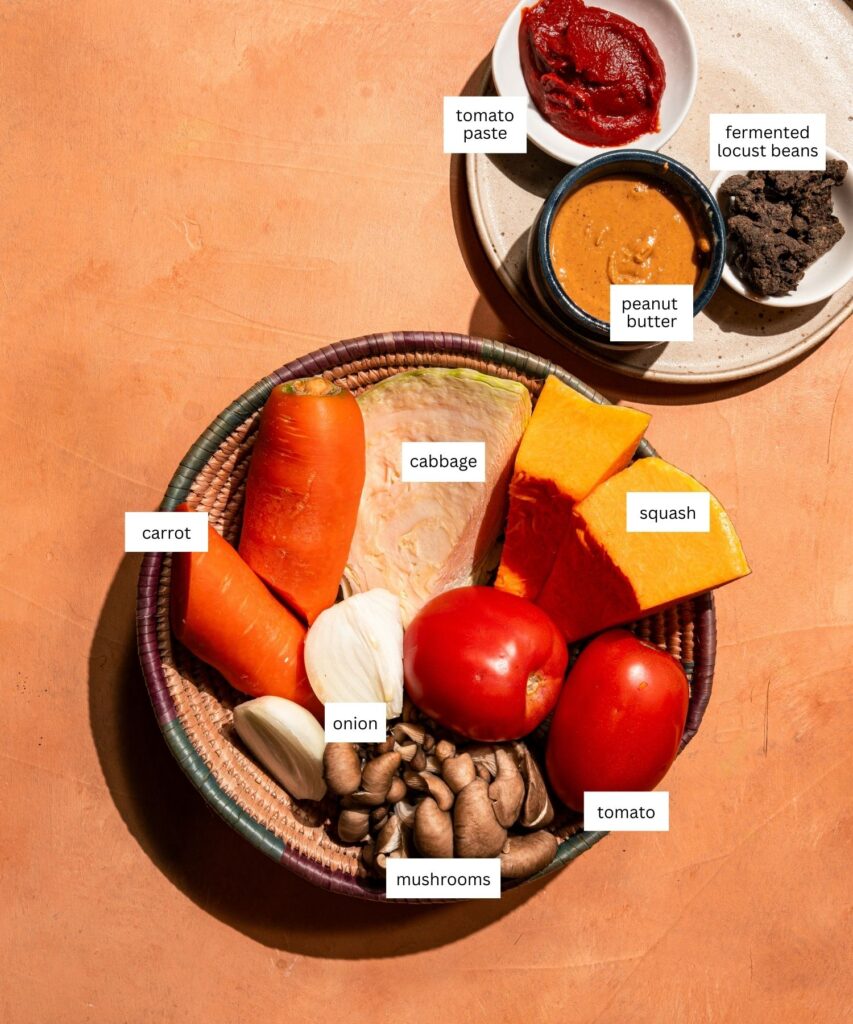
- Fresh mushrooms. I always opt for a mix of oyster mushrooms and king oyster for their texture and flavour
- Vegetable Oil.
- Raw Peanut Butter. This recipe requires 100% raw peanut butter as that is what we use on the continent. Make sure you are using smooth, 100% peanut butter with no added sugar or oil.
- Nokoss/Aromatics. Nokoss is a Senegalese green seasoning blend made from green bell pepper, green onions, garlic, herbs, onion and scotch bonnet pepper. Everyone has their own rendition but you can find mine on my Nokoss Tofu recipe.
- Tomato. A mix of tomato paste and blended tomatoes will be used as the base of the stew.
- Bouillon Paste. My first choice is always better than bouillon.
- Dawa Dawa (optional but highly recommend). In addition to the Nokoss, we will use fermented locust beans (netotou/dawa dawa). Dawa Dawa can be found at many African stores, either as a dry spice or in the frozen section. The packaging can list any of these names — iru, ogiri okpei (ensure it is locust beans because there are many types of ogiri), soumbala/soumbara, netetou, nere. Besides African stores, you can purchase dawa dawa online at Burlap and Barrel (US and Canada), MyChopChop (Canada) or on Etsy (US).
- Whole vegetables. My go-to are carrots, cabbage and pumpkin, but cassava and garden eggs work too.
How to make a Vegetarian Senegalese Mafe
- Fry the mushrooms
- Saute the onions and tomato paste
- Cook the peanuts
- Add tomatoes and nokoss and cook for some time
- Add in the seasoning and vegetables
- Cook until oil pools to the top. It is very important to make sure that the stew is cooked long enough to breakdown the peanuts. Otherwise, there is a chance of diarrhea.
What to pair this recipe with Mafe
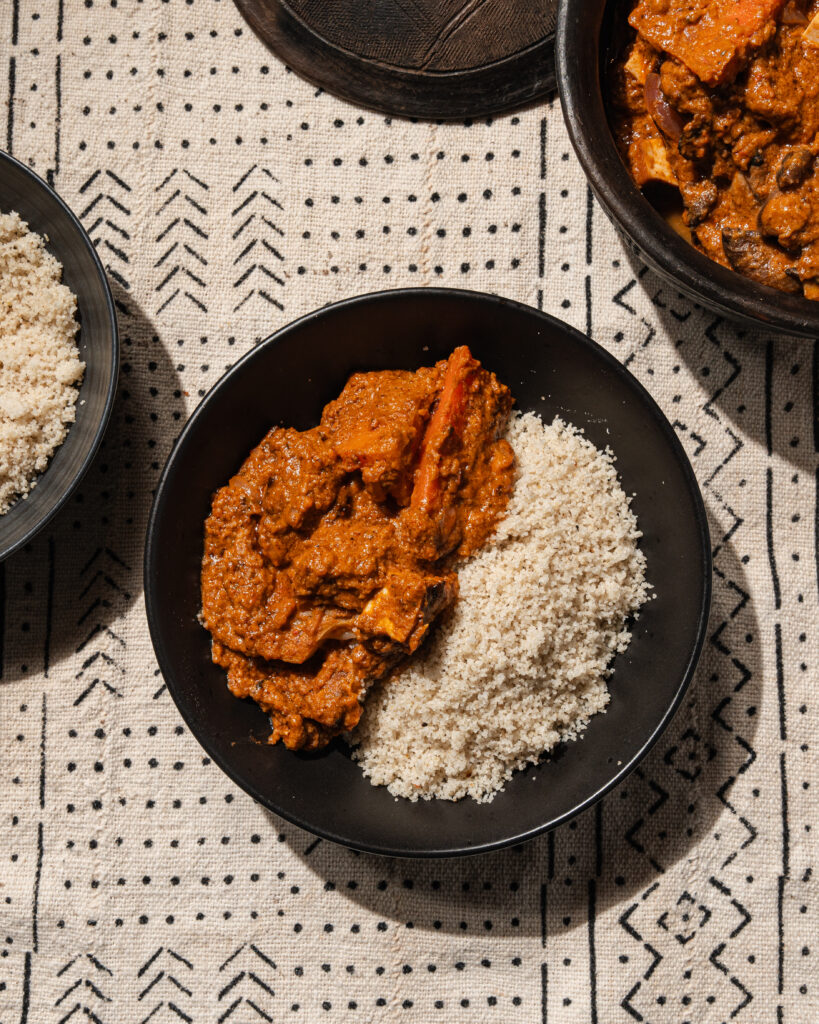
Mafe is typically enjoyed with rice or fonio, an indigenous West African grain in the millet family. To learn more about fonio, please check out this link. Click Here.
Storage Tips
- Store in the fridge for up to a week
- Freeze for longer storage.
Vegetarian Senegalese Mafe
Ingredients
- 2 large handfuls of fresh mushrooms preferably oyster
- 3 tablespoons vegetable oil
- 1 small onion diced
- 2 tablespoons of tomato paste
- 1/2 cup of 100% natural peanut butter
- 3 tomatoes
- 1 scotch bonnet pepper
- 2-3 tablespoons of Nokoss (type Nokoss in search bar for recipe)
- 1 1/2 teaspoons fermented locust beans
- 1 vegetable bouillon cube
- 1/4 cabbage split in two
- 1 large carrot cut in two
- 1 pumpkin chunk cut in half
Instructions
- Fry the mushrooms in the oil till crispy
- Remove the mushrooms then sauté the diced onions in the oil until the onions are soft. Keep the heat at medium-low
- Add the tomato paste and sauté in the oil at medium-low for 3-5 minutes. Keep an eye on the tomato paste, as it has a tendency to burn.
- Blend the peanut butter with 2 cups of water and pour into the pot. It looks like a lot of water, but the stew will thicken. Bring the peanut mixture to a boil.
- Blend the tomatoes and scotch bonnet pepper then pour into the pot. Let everything cook for 15 minutes. If you have not made the nokoss yet, you can use this time to make it.
- Once the 15 minutes has passed, add the nokoss, the fermented locust beans, the bouillon paste as well as the whole vegetables. Cook at medium-low for 25-30 minutes until the sauce thickens and oil pools to the top. This indicates that the stew is ready.
- Serve with rice or fonio

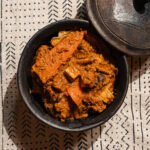
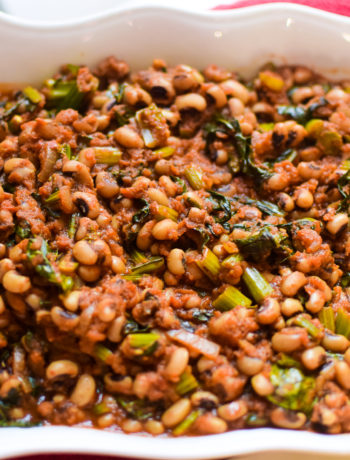
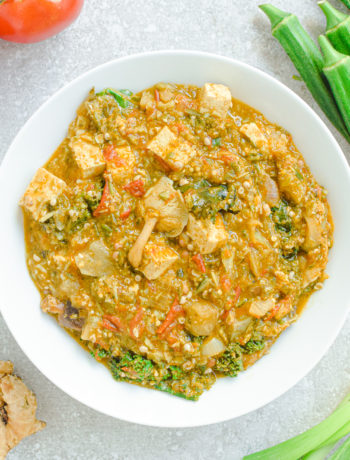
No Comments